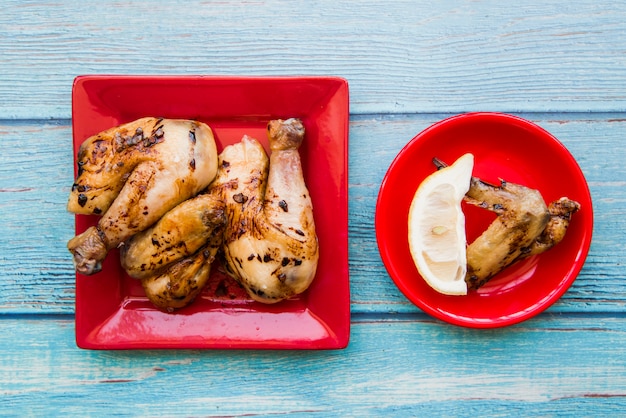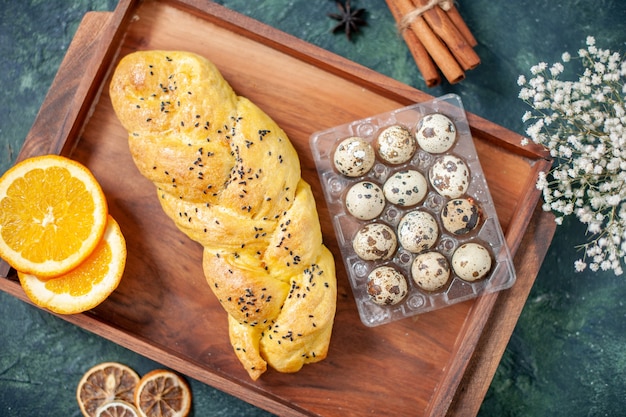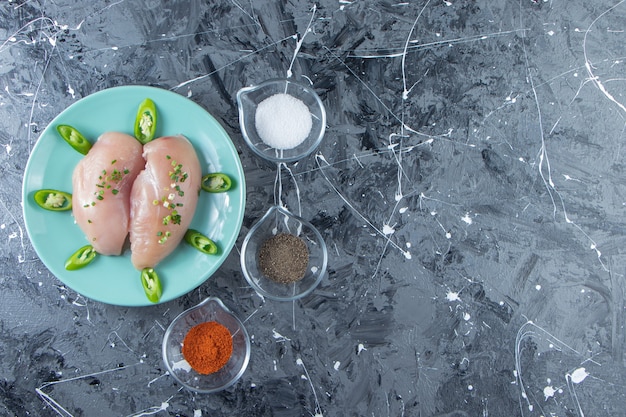(Part 1) The Foundation: Understanding chicken breast size

The Chicken Breast Size Spectrum: Small, Medium, and Large
For the sake of clarity, I like to divide chicken breasts into three categories:- Small: These are the dainty ones, weighing in around 4-5 ounces. They're like the delicate dancers of the chicken world, needing a little less time to reach their culinary peak.
- Medium: The most common size, weighing around 6-8 ounces. They're the reliable workhorses, perfect for everyday meals and quick recipes.
- Large: The big hitters, these fellas can reach 10 ounces or more. They're a statement piece, ideal for sharing or leftover feasts, and they require a bit more time and attention.
Embrace the Scale (or Use Your Hands!)
While a kitchen scale is a great tool for precision, you don't necessarily need one. If you're using a scale, simply weigh your chicken breast to determine its category. If you're winging it (pun intended!), use your hands to get a general idea of the size. A small chicken breast will fit comfortably in the palm of your hand, a medium breast will be slightly larger, and a large breast will be noticeably wider and thicker.(Part 2) The Cooking Methods: Choosing Your Approach

Pan-Frying: The Quick and Crispy Method
This is my personal favourite for achieving that irresistible crispy crust. It's all about high heat and a good quality pan. A screaming hot pan, seasoned and ready to go, is your best friend here. Think sizzling sounds and golden-brown edges.Oven Baking: The Gentle and Reliable Method
The oven is perfect for cooking multiple chicken breasts at once, and it's a great option for larger cuts. Oven baking tends to produce a more tender result, but you have to be careful not to overcook them. A meat thermometer is your best friend here, ensuring every bite is perfectly cooked.Grilling: The Summery and Smoky Method
Ah, the grill. It's a summertime essential, and chicken breast is a classic grilling companion. The key to grill success is preheating your grill to the right temperature and keeping a close eye on your chicken. Don't let those beautiful grill marks turn to burnt edges!(Part 3) The Timing: It's All About the Minutes

Pan-Frying: Speedy and Delicious
This method is perfect for smaller chicken breasts, and the results are usually ready in a flash.| Chicken Breast Size | cooking time (per side) |
|---|---|
| Small | 3-4 minutes |
| Medium | 4-5 minutes |
| Large | 5-6 minutes |
Oven Baking: A Bit More Patience
For oven baking, set your oven to 375 degrees Fahrenheit (190 degrees Celsius).| Chicken Breast Size | Cooking Time |
|---|---|
| Small | 15-20 minutes |
| Medium | 20-25 minutes |
| Large | 25-30 minutes |
Grilling: Summertime Flavours
Grilling times can vary depending on your grill's heat and how well it's preheated, but this table gives you a general idea.| Chicken Breast Size | Cooking Time (per side) |
|---|---|
| Small | 4-5 minutes |
| Medium | 5-6 minutes |
| Large | 6-7 minutes |
The Importance of Resting: A Moment of Relaxation
After your chicken breast is cooked, give it a few minutes to rest before slicing or serving. This allows the juices to redistribute, resulting in a more tender and juicy chicken breast.(Part 4) The Temperature Test: Doneness Decoded
This is where we get a little more scientific. We're not just relying on the visual cues anymore; we're using a meat thermometer to ensure our chicken breast is perfectly cooked and safe to eat.The Golden Rule: 165°F (74°C)
The USDA recommends that chicken be cooked to an internal temperature of 165 degrees Fahrenheit (74 degrees Celsius). Don't be shy about using that trusty meat thermometer! It's your guarantee of a delicious and safe meal.Signs of Doneness: Clues Beyond the Thermometer
While a thermometer is the most accurate way to check, there are some visual cues to look out for. A cooked chicken breast will be firm to the touch, and the juices should run clear, not pink.(Part 5) The Art of Marinating: Unlocking Flavour
Ready to take your chicken breast game to the next level? It's time to talk marinades. A good marinade can transform a basic chicken breast into a flavour explosion, making it tender and bursting with flavour.The Power of Flavour: Your Marinade Options
Marinades can be as simple or as complex as you like. Here are a few of my personal favourites:- Classic Lemon and Herb: A simple yet effective blend of lemon juice, fragrant herbs like rosemary and thyme, aromatic garlic, and good quality olive oil.
- Spicy Ginger: This marinade packs a punch with a blend of fresh ginger, garlic, soy sauce, a touch of honey for sweetness, and a hint of chilli for heat.
- Mediterranean Delight: This vibrant marinade features the flavours of the Mediterranean, with lemon juice, olive oil, oregano, garlic, and a pinch of red pepper flakes for a touch of warmth.
Marination Time: The More, the Merrier
For optimal flavour, try to marinate your chicken breast for at least 30 minutes, but ideally for several hours or even overnight. The longer you marinate, the more flavour the chicken will absorb.(Part 6) Preventing Dryness: The Chicken Breast's Greatest Enemy
Dryness. The dreaded chicken breast nemesis. But don't despair, there are techniques to prevent this culinary catastrophe and ensure your chicken breast stays juicy and delicious.The Moisture-Lock Technique: Keeping the Juices In
This is one of my go-to techniques. Before cooking, pat your chicken breast dry with paper towels. Then, generously season it with salt and pepper, and drizzle a little olive oil over the top. This creates a barrier that helps to trap moisture inside the chicken.The Brine Method: A Hydration Boost
Brining is another fantastic way to keep your chicken breast moist and tender. Simply soak your chicken breast in a saltwater solution for at least 30 minutes. This process helps to draw moisture into the chicken, resulting in a juicier, more flavorful breast.(Part 7) Chicken Breast Variations: Beyond the Basics
Don't be afraid to get creative! The world of chicken breast is a culinary playground, waiting to be explored. Experiment with different cooking techniques and flavour combinations.Stuffed Chicken Breast: A Filling Delight
This is a great way to add flavour and substance to your chicken breast. Try stuffing it with spinach and ricotta cheese, or with a medley of sun-dried tomatoes, feta cheese, and basil. Get creative and let your imagination run wild!Chicken Breast Skewers: Perfect for Grilling
These are easy to assemble and cook, making them ideal for a summer barbecue. Thread your chicken breast onto skewers with your favourite vegetables, like peppers, onions, and zucchini. They're also great for grilling indoors on a stovetop grill pan.Chicken Breast Tacos: A Fiesta in a Tortilla
This is a delicious and satisfying meal. Think grilled chicken breast, fresh toppings like salsa, avocado, and sour cream, all wrapped up in a warm tortilla.(Part 8) FAQs: Your Chicken Breast Questions Answered
Now, let's address some common chicken breast questions.Q: How do I know if my chicken breast is cooked through?
A: The most accurate way to check is with a meat thermometer. The internal temperature should reach 165 degrees Fahrenheit (74 degrees Celsius). You can also look for visual cues, such as the chicken being firm to the touch and the juices running clear, not pink.
Q: What happens if I overcook my chicken breast?
A: overcooked chicken breast will be dry and tough. To avoid this, make sure you use a thermometer and cook it to the appropriate internal temperature. You can also use techniques like marinating and brining to help keep the chicken moist.
Q: Can I freeze chicken breast?
A: Yes, you can definitely freeze chicken breasts. Place them in a freezer-safe bag or container and freeze for up to 3 months. To thaw, transfer the chicken to the refrigerator overnight.
Q: What are some good side dishes to serve with chicken breast?
A: Chicken breast is a versatile protein that pairs well with a variety of side dishes. Some popular options include roasted vegetables, mashed potatoes, rice, salad, and pasta.
Q: Can I reheat chicken breast?
A: Yes, you can reheat chicken breast. To do so, you can reheat it in the oven, microwave, or on the stovetop. Just make sure it’s heated to an internal temperature of 165 degrees Fahrenheit (74 degrees Celsius).
There you have it. My comprehensive guide to cooking chicken breasts to perfection. Remember, it's all about understanding the size, the method, the timing, and the temperature. With a little practice and these tips, you'll be whipping up delicious chicken breasts in no time! Happy cooking!Everyone is watching

How to Cook Frozen Lobster Tails Perfectly: A Step-by-Step Guide
RecipesLobster. Just the word conjures up images of lavish meals, special occasions, and a taste of luxury. But let's...

Pigs in a Blanket Cooking Time: How Long to Bake for Perfect Results
RecipesAh, pigs in a blanket. Just the name conjures up images of those delightful little parcels of crispy pastry en...

Pork Fillet Cooking Time: How Long to Cook It Perfectly
RecipesPork fillet, or tenderloin as it's sometimes called, is a real favourite in our house. It's so versatile, and...

The Ultimate Guide to Tender, Juicy Pulled Pork
RecipesRight, let's talk pulled pork. It's one of those dishes that just screams "comfort food," doesn't it? I mean...

The Ultimate Guide to Cooking Sweet Potatoes: From Roasting to Mashing
RecipesSweet potatoes. Just the name conjures up images of warm, comforting dishes, bursts of vibrant color, and a to...
